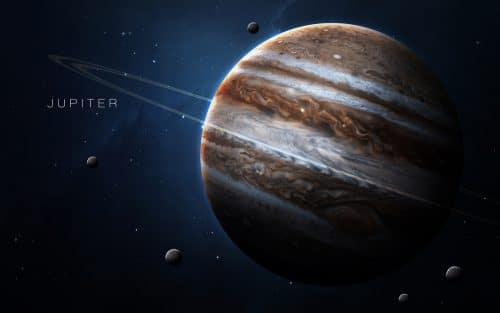Astronomers have documented the collision of a celestial body with the planet Jupiter. again

The article was published on the Davidson Online website
A celestial object that was probably several tens or hundreds of meters in diameter collided a few days ago with the largest planet in the solar system, Jupiter. At least two amateur astronomers recorded the collision on the night of March 17-18. Gert Kernbauer from Austria photographed the event with a 20 cm diameter telescope. In the video composed of his photographs, the collision event can be seen as a flash of light in the upper right part of the planet. John McKeon (McKeon) from Ireland recorded the event with a slightly larger telescope. Based on the photographs, experts at NASA estimate that the offending object was most likely a not very large asteroid. The main effect seen in the photo is not the collision itself, but apparently the explosion of the asteroid upon entering Jupiter's atmosphere.
The collision is seen on the right side of Jupiter. John McCown's video
In fact, since Jupiter is not a rocky planet like Earth or Mars, but a giant planet made up of compressed gas, it really has no surface that anything can collide with. If part of the asteroid survived the explosion, it was simply engulfed in the dense gas, and crushed by the planet's immense gravity.
The collision recorded a few days ago is the latest in a series of impacts of celestial bodies in Jupiter. In July 1994, the comet Shoemaker Levy 9 hit it. The collision was well documented from Earth, as well as by the cameras of the "Galileo" spacecraft that was on its way to Jupiter and the "Hubble" space telescope. The impact of the comet left "scars" on Jupiter that were clearly visible in telescopes for months after the impact.
In 2009, an asteroid with a diameter of about 500 m collided with Jupiter, in a collision that was nicknamed the "Wesley event" (after the Australian astronomer who identified it), and left a mark on Jupiter thousands of kilometers long. Since then, several more collisions of celestial bodies with Jupiter have been recorded. "We see such a collision on average once a year," says Paul Chodas, an asteroid researcher from the American space agency, "probably because our technology now allows it."
Why do so many asteroids and comets collide with Jupiter, and what does this mean for the danger to Earth? First, Jupiter attracts many such celestial bodies because it is the heaviest body around. It is about 318 times heavier than the Earth and yet its mass is only one thousandth that of the Sun. Second, it is relatively close to the asteroid belt, the area where about 95 percent of the asteroids in our solar system are concentrated, which lies between the orbits of Jupiter and Mars.
On the giant Jupiter, collisions of this magnitude apparently have no effect at all. On a much smaller and mostly densely populated planet, the impact could be much more severe, as has already happened in the past. "From our point of view, this is simply a reminder that collisions in the solar system are a real event, and Jupiter absorbs many of them," concludes Chudas. This reminder is currently being implemented by NASA and other bodies, which are investing more and more resources in tracking asteroids and meteors that may collide with the Earth.
More on the subject on the science website - Coverage of the impact of Comet Shoemaker Levi 9 in 1994
Impact of comets and asteroids on Jupiter after Shoemaker Levi 9

4 תגובות
http://news.walla.co.il/item/2950759
Peace
I read a somewhat scary article in Vala about a planet that will send meteors to Earth and destroy life on Earth. Is there a chance of such a disaster?
Shame we don't have an interception system yet
Jupiter protects the Earth with its body from multiple asteroid impacts